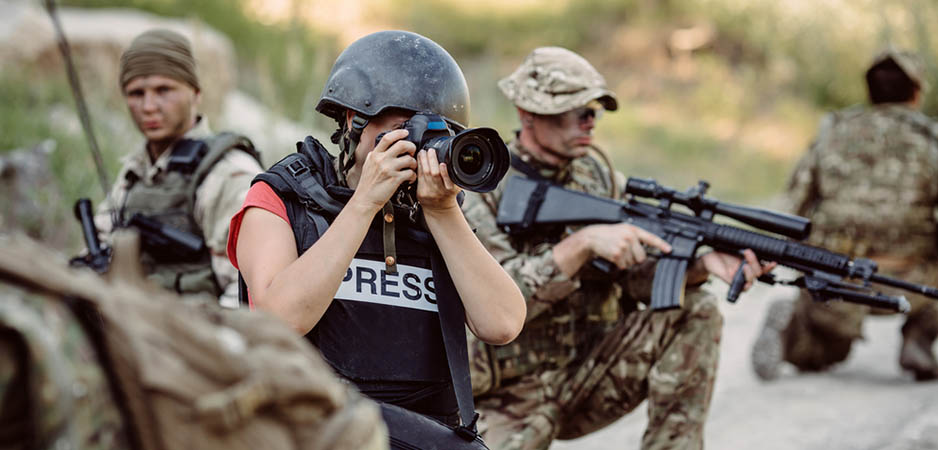cp160517@ohio.edu
 | |||||
| A photographer braves the front lines with the troops to get the perfect shot. |
When Ron Haeberle took those photographs, he must have been put in a difficult position because the army expected him not to disclose the horrific truth of the events at My Lai. Haeberle spent over a year deliberating about whether to publish the photographs or not. Eventually, Haeberle approached the Cleveland Plain Dealer, who ran a front page story detailing the events at My Lai with accompanying black and white photographs. The same newspaper and many other publications have since released more of the photographs with follow up stories.
In this case, I think that Haeberle had an ethical responsibility to seek the truth and report it as accurately and contextually as possible. Given the situation, I think that it's more important that the truth came out, even if Haeberle didn't publish the photographs directly after returning to the United States.
Since the incident in 1968, Haeberle has returned to My Lai many times and will be there again come the 50th anniversary of the massacre. I think that this shows that Haeberle didn't use his incredible footage for stardom or fame, but to shine a light on the truth of military events during the Vietnam War. Haeberle said that he felt he had to keep taking pictures and capture the series of events that were unfolding right in front of him. He knew that the My Lai massacre would be marked in history and that his pictures would document the truth.
Journalists have an obligation to the public to seek the truth and report it while being transparent and independent. It's possible that Haeberle was put in a challenging position after he returned to the United States because he had to decide whether his obligation to the public was more important than his loyalty to the army and the members of Charlie Company.
As an ethical photographer, Haeberle made an informed decision when he chose to share and publish the original content he took at the My Lai massacre. If he hadn't come forward with his footage, the incriminating evidence would've never exposed some of the soldiers who committed crimes at My Lai. There would've been no military accountability.
Ron Haeberle was put in an impossible situation when he witnessed the mass shootings that took place at My Lai in 1968. However, I think that his story encourages young journalists to learn from his experience and prepare to make ethically sound decisions as future journalists.
No comments:
Post a Comment